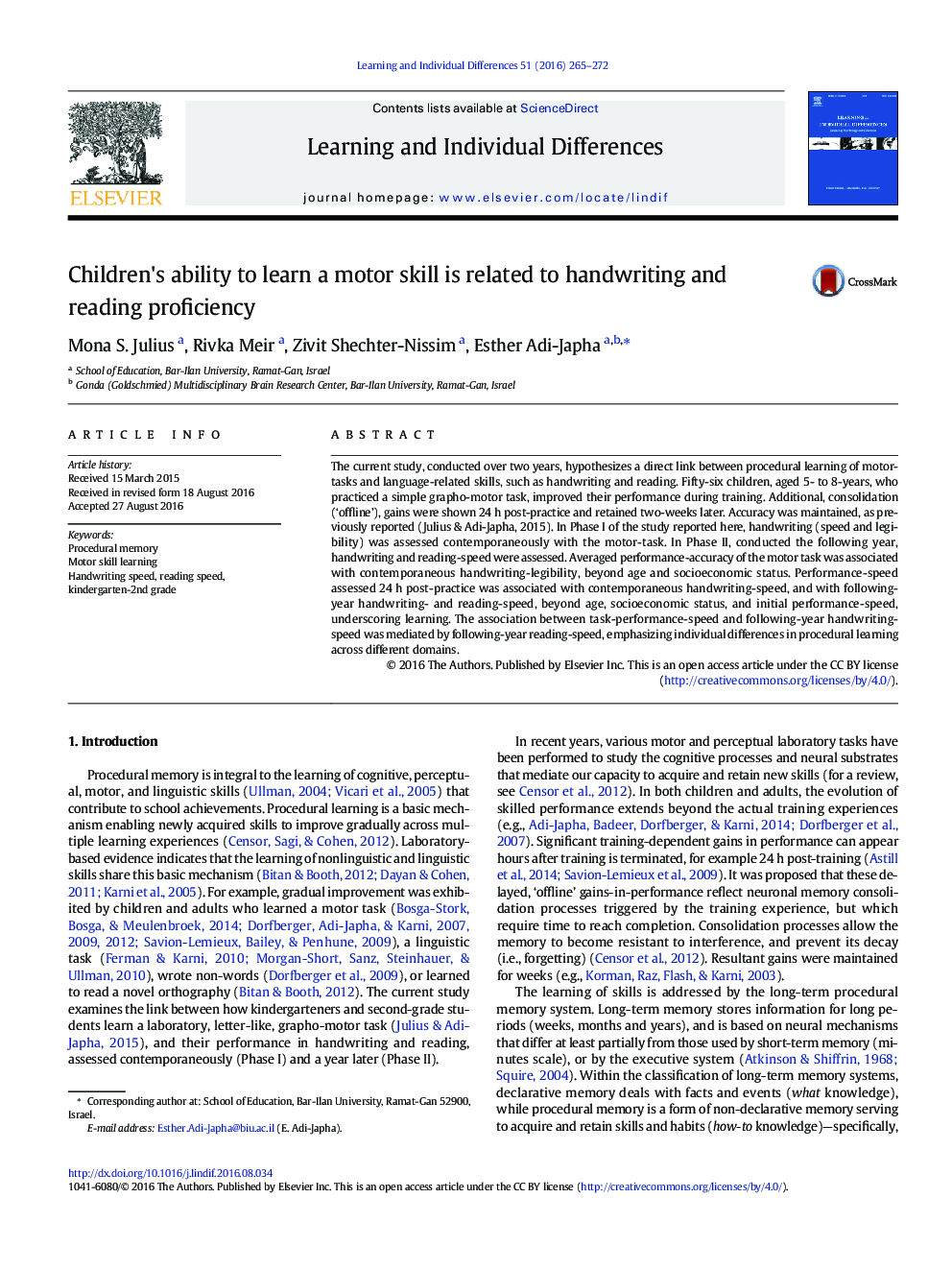| Article ID | Journal | Published Year | Pages | File Type |
|---|---|---|---|---|
| 4940121 | Learning and Individual Differences | 2016 | 8 Pages |
â¢Children practiced a grapho-motor task, and tested at initial and end-of training.â¢Additional testing took place at 24 h and 2 weeks post-training.â¢Handwriting was assessed the same year, and again the following year with reading.â¢24 h post-training speed best predicted handwriting- and reading-speed measures.â¢Reading mediated the association between the grapho-motor task and handwriting.
The current study, conducted over two years, hypothesizes a direct link between procedural learning of motor-tasks and language-related skills, such as handwriting and reading. Fifty-six children, aged 5- to 8-years, who practiced a simple grapho-motor task, improved their performance during training. Additional, consolidation ('offline'), gains were shown 24Â h post-practice and retained two-weeks later. Accuracy was maintained, as previously reported (Julius & Adi-Japha, 2015). In Phase I of the study reported here, handwriting (speed and legibility) was assessed contemporaneously with the motor-task. In Phase II, conducted the following year, handwriting and reading-speed were assessed. Averaged performance-accuracy of the motor task was associated with contemporaneous handwriting-legibility, beyond age and socioeconomic status. Performance-speed assessed 24Â h post-practice was associated with contemporaneous handwriting-speed, and with following-year handwriting- and reading-speed, beyond age, socioeconomic status, and initial performance-speed, underscoring learning. The association between task-performance-speed and following-year handwriting-speed was mediated by following-year reading-speed, emphasizing individual differences in procedural learning across different domains.
